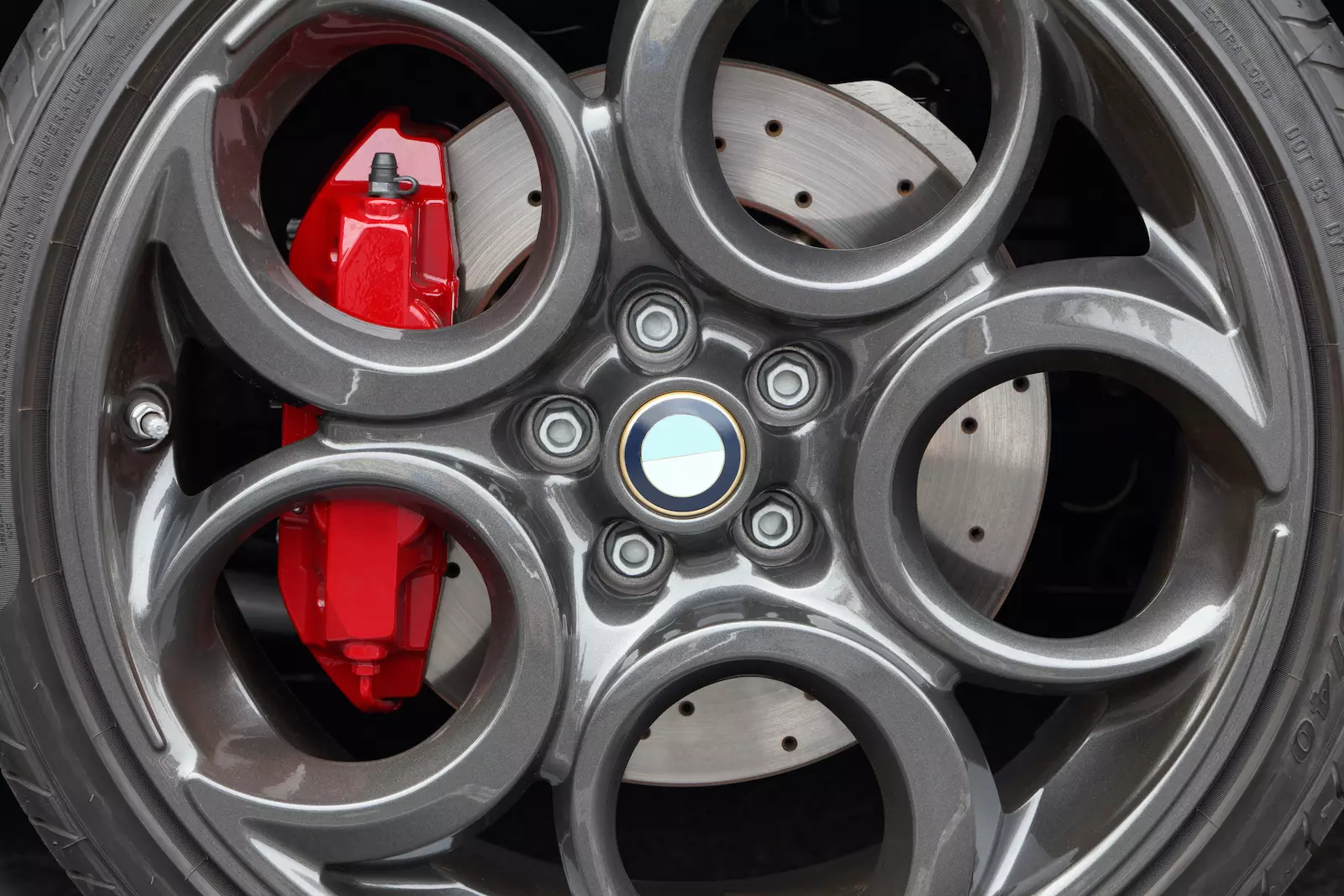
A brake caliper is one of your car or bike's most critical components. Without a working brake caliper, your vehicle simply won't stop in the time and distance you expect it to. Here we explain how brake calipers function, how they differ in design and how to tell if there's a problem with one.
Brake calipers: how do they work?
Your car wheels are attached to circular metal discs and these spin along with the wheels.
The brake caliper fits over the spinning disc and works much like a clamp – step on the brake pedal or pull the brake lever and the pads within the caliper are pushed out via pistons to make contact with the spinning disc. The friction generated by the action of the pads on the disc is what slows the vehicle.
There are several types of brake caliper:

What is a floating brake caliper?
Floating brake calipers have piston(s) on only one side of the disc but contains pads that make contact with both sides. The caliper slides back and forth on bushings or pins, acting as a clamp.
When the brakes are applied, the piston pushes the brake pad only on the inboard side of the disc.
The floating caliper then slides on the bushings or pins and squeezes the outboard pad against the disc, initiating braking action.

How does a sliding brake caliper differ from a floating caliper?
The sliding brake caliper type is mounted in a slot in the caliper adapter. It is a variation of the floating caliper design, using a single piston and operating on the same principle – the piston applies pressure to one brake pad and the movable caliper applies pressure to the other.
What about fixed calipers?
A fixed caliper usually consists of two, four, six or even eight pistons. A fixed caliper is mounted to a bracket with no sliding pins or bushings in its mount.
The fixed caliper consists of an equal number of pistons on both the inboard and outboard halves of the caliper. It is generally accepted that fixed calipers have better performance, but at a higher cost. Fixed calipers with multiple pistons tend to be installed on high-performance cars.
What can go wrong with a brake caliper?
A brake caliper has moving parts that can go wrong from time to time.
When brakes seize it can be because the piston becomes stuck within the caliper, the pads become stuck to the disc, or on single-piston calipers the slide pins can seize.
If the brakes seize when the vehicle has been unused then the symptoms are fairly obvious: you can't get the car to move. Find out how to unseize a brake caliper here.

Painting brake calipers: how do I do it?
Brake caliper paint can lend your car or bike the stand-out look that many car makers give to their sportier models from the factory.
Usually available from car parts shops in colours such as red, yellow, blue and silver, it needs to be applied to thoroughly clean and dry calipers – use brake cleaner and a brush to get rid of any dust and grime.
Make sure you're working under cover to avoid the weather interrupting your work. With the brake disc, brake hoses and other components masked off, apply the paint in one direction with a brush or spray can. A typical brake caliper paint will be touch-dry within 45 minutes, and extra coats will need to be applied within an hour of the last coat, but check yours for specific instructions.
Most paint makers recommend waiting 24 hours for the final coat to dry before driving the vehicle.
How can I make my car’s brakes better?
Short of removing and replacing your car’s braking system with larger discs, you can fine-tune your present braking system to perform better:
- Bigger brake caliper pistons: Larger pistons have greater clamping area and thus more clamping force over the disc
- More pistons: High-performance calipers that allow for more pistons - six-piston and even 12-piston models can increase the clamping force of the caliper.
- Less heat retention: Brake air scoops can help in this area; larger discs can spread excess heat over a larger area
- Differential bore calipers It helps if the pistons closer to the rear edge of the caliper are larger. Differential-bore calipers use smaller pistons up front, larger pistons toward the back.
- Porsche Composite Ceramic Brakes (PCCB): These are among the best brakes you'll find in any road car. They're made from siliconised carbonfibre, with very high temperature capability, a 50% weight reduction over iron discs, a significant reduction in dust, and enhanced durability in corrosive environments over conventional iron discs. The discs are internally vented, similar to cast-iron ones, and cross-drilled. The cost, as you can imagine, is exorbitant.

What is a brake caliper rewind tool?
A brake caliper rewind tool is a specialised but relatively cheap piece of kit. Once you've removed the old brake pads, the brake caliper tool is used to push back the piston so that new brake pads can be easily removed and replaced.
Where can I buy a brake caliper rewind tool?
You'll find this tool online and at car parts and accessory shops. You can sometimes get away with using a G-clamp if it's a simple matter of pushing the piston back, but some pistons need to be rotated to be reset, and the rewind tool is designed specifically for this job.